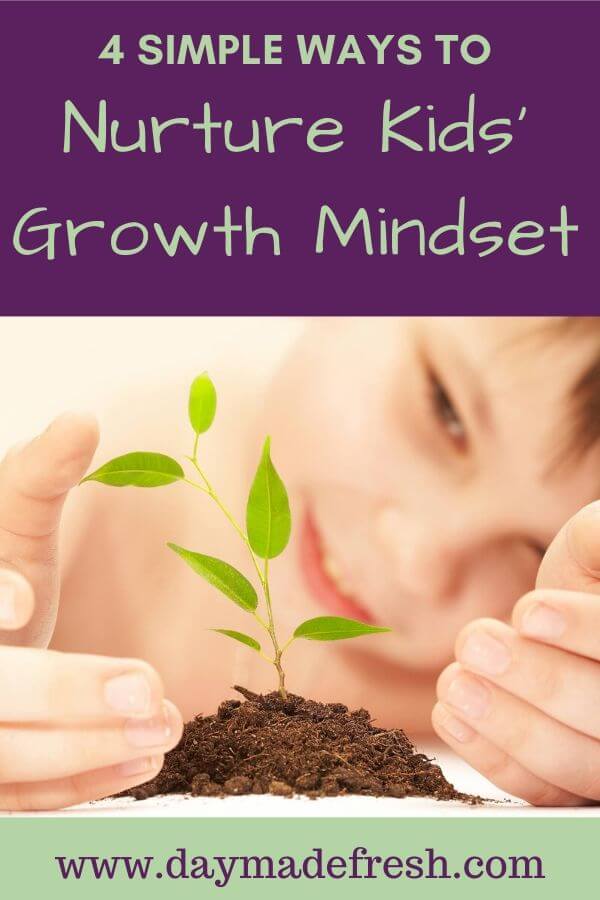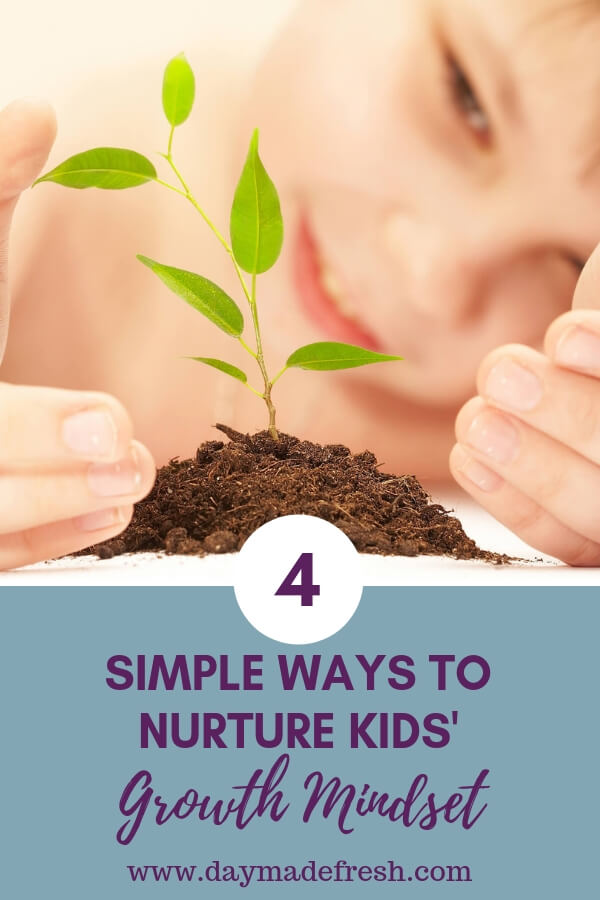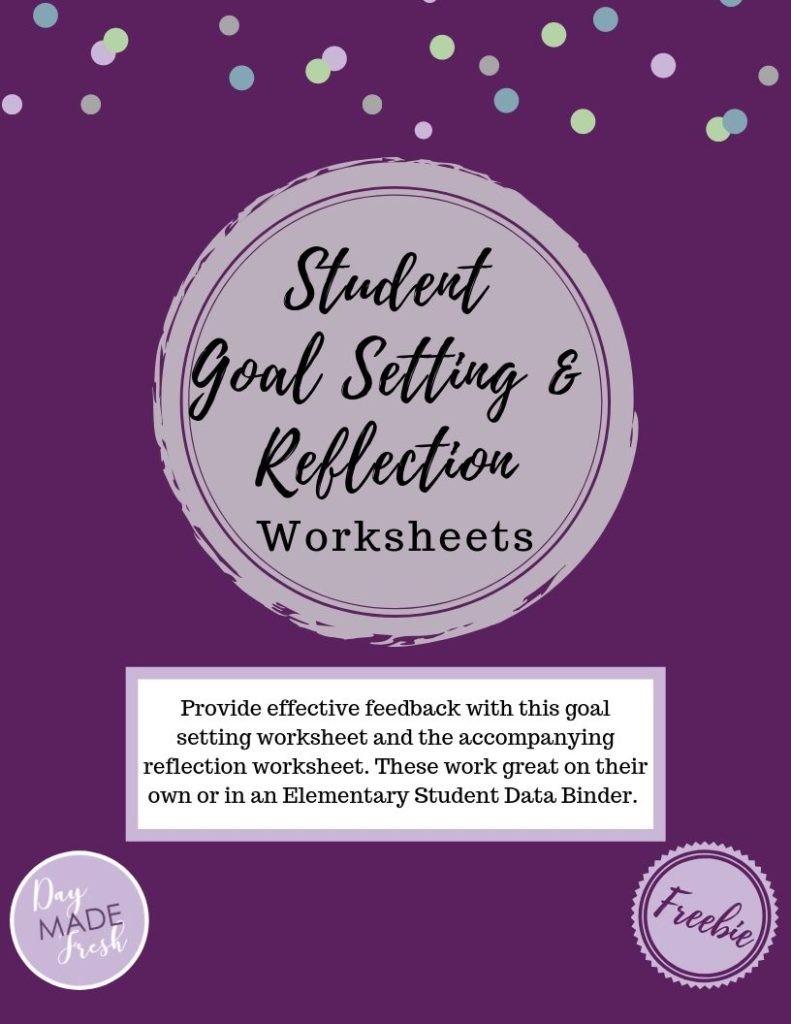I believe one of our most important tasks as a parent and as a teacher is to nurture kids’ growth mindsets. I have seen time and time again how vital having a growth mindset is to future success.
Kids with a strong growth mindset versus a fixed mindset are more motivated to learn. They are also more willing to take on new challenges and more likely to learn from failure.
Building a growth mindset in kids is an important factor in future success.
To nurture a growth mindset explicitly teach what a growth mindset and fixed mindset are. Once the child understands what a growth mindset is they can apply it by setting personal goals. Effective feedback is crucial to reinforcing a growth mindset versus a fixed mindset. Finally, they can see their growth mindset in action by tracking their growth.
This post contains some affiliate links for your convenience. Click here to read my full disclosure policy.

Explicitly Teach Growth Mindset
Building a growth mindset in kids when they are young is important. They have less preconceived beliefs and are more willing to take risks. Plus developing a growth mindset at a young age will give them a chance to test their limits. As
Teaching growth mindset to children involves first understanding their current mindset. Once you have established their background knowledge introduce and define growth and fixed mindsets. Do this by using real-world and other examples to help kids see a growth mindset in action.
To explicitly teach a
- Understand the child’s current mindset through discussion and questions. (“Are people born smart?” or “Can people get smart?”)
- Explain how the brain works. That we aren’t born smart, but that we can strengthen our brain like a muscle. With practice, learning new things, and by challenging ourselves.
- Teach the difference between a fixed mindset and a growth mindset. You can create a chart, act out how people with different mindsets would behave, list examples of characters that have each mindset, etc.
- Introduce motivational phrases that remind kids to have a growth mindset
- Praise the child when they demonstrate having a growth mindset. Give effective feedback to encourage the mindset.
Growth Mindset Motivational Phrases
- “Let’s get smarter!”
- “Ready to grow your brain?”
- “Yea! It’s a challenge!”
- “Mistakes mean we’re learning.”
- “Fail = First Attempt In Learning”
- “You just can’t do it, YET!”
If you want to learn more about growth mindset read
Goal Setting Conversations
One of the best ways for kids to understand how the growth mindset works are to have them set personal goals. They will see that with practice and hard work that they are capable of change and growth.
It would seem that this would only work if the child meets or exceeds their goal. However, I have found this not to be true if an effective goal-setting process is put in place.
An effective goal setting process includes:
- Identifying where the child is and where they want to go.
- Setting an attainable, but kid-driven goal (If they want to set it high even after you’ve given advice…let them. It will be a great learning experience or they may blow it out of the water!)
- Creating an action plan. What will they do each day to reach their goal? Who can help them reach their goal?
- Tracking the child’s progress (which I will cover below).
- Reflecting on if the goal was met, exceeded, or not met yet. As well as, what parts of the action plan went well and what could have been better.
If one part of this process is missing goal setting is less effective in building a growth mindset. It can even be detrimental to the child’s progress.
One of the most frequently forgotten steps is reflecting on the goal and action plan. This step is crucial to helping the child learn from the process. If the child doesn’t meet their goal they need to reflect, so they can make adjustments. They should first identify what actions they did that helped them. Then what actions they should change to better help them towards their goal.
Want FREE goal setting and reflection worksheets? Click here to download your copies, today!
Effective Feedback
The feedback or praise a child receives is crucial to the success of nur
Want to know more about John Hattie’s research check out his books:

Effective feedback focuses on the child’s processes and effort instead of their personality or character traits. Instead of saying, “You’re so smart!” “Good Job” or “Good Girl!” try saying, “I like how you worked hard on that!” “I’m proud of you for not giving up!” or “Thank you for listening!”
The first examples are positive, but they can teach children to give up when things get hard or to do the bare minimum. This is because they don’t want to disappoint or ruin their reputation for being “smart” or “good.” Effective feedback or praise will reinforce a child’s growth mindset. If you praise children for their effort they are more likely to persevere.
Track Growth
Kids need to see that they have control over their ability to learn. To give them a visual representation of their
When a child records their progress and sees that
To track the data use a simple, kid-friendly graph or chart. It should be something that they can complete with little to no assistance. For it to be effective they should record data at least weekly. This gives them consistent feedback on their progress.
If a child does not make growth and must record a drop on their record sheet a fear can be that they will be unmotivated. This is where having a goal setting reflection conversation is imperative. Ask the child why they think it has gone down. Talk about what they could do better next time as well as what they are doing well.
When I started this process I worried kids would lose motivation if they didn’t reach their goal. They demonstrated that the opposite was actually the case. They were able to identify what went well and what caused them to not get the looked for
We have the power to build kids’ growth mindset. Kids that believe in their own power to grow and reach their goals can accomplish great things.
To effectively nurture a growth mindset in children:
- Teach what a growth mindset is versus a fixed mindset
- Set reasonable goals together
- Provide effective feedback
- Track their growth
How will you start implementing a growth mindset? I want to hear how it goes for you. Share your success stories with me on Facebook or Instagram by tagging @daymadefresh. Want to save this post, so you can refer to it later? Save it on Pinterest!
To get you started click here to get free goal setting and reflection worksheets.
Related Post: 5 Ways You Can Change Your Mindset to Get
Related Post: Develop Missing Behavior Skills with Student Behavior Check Sheets



